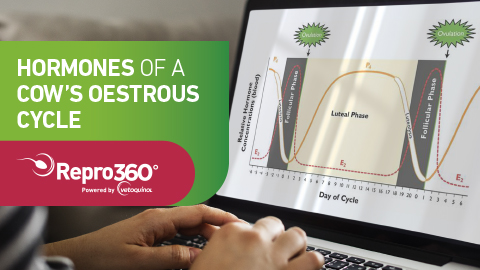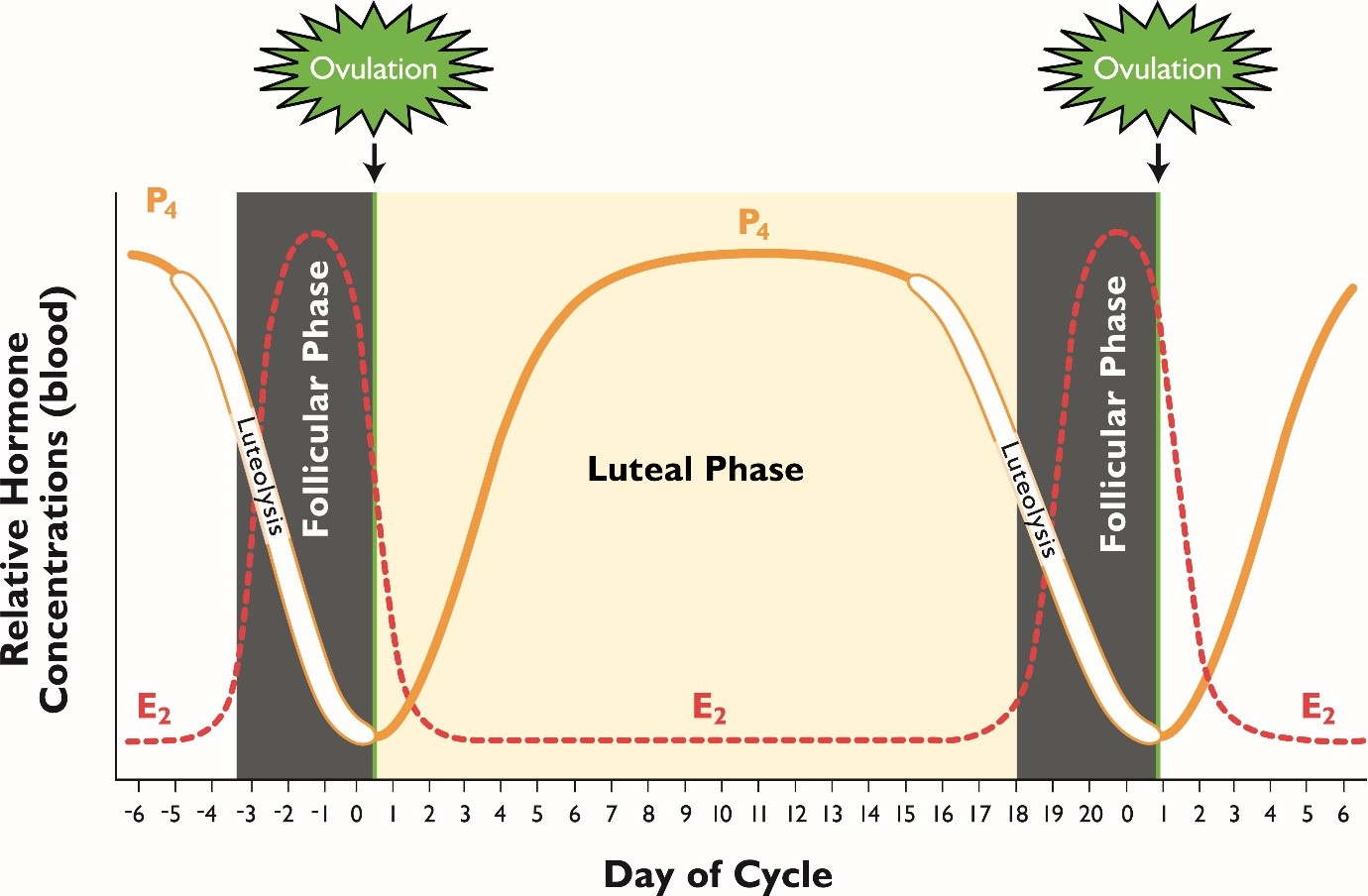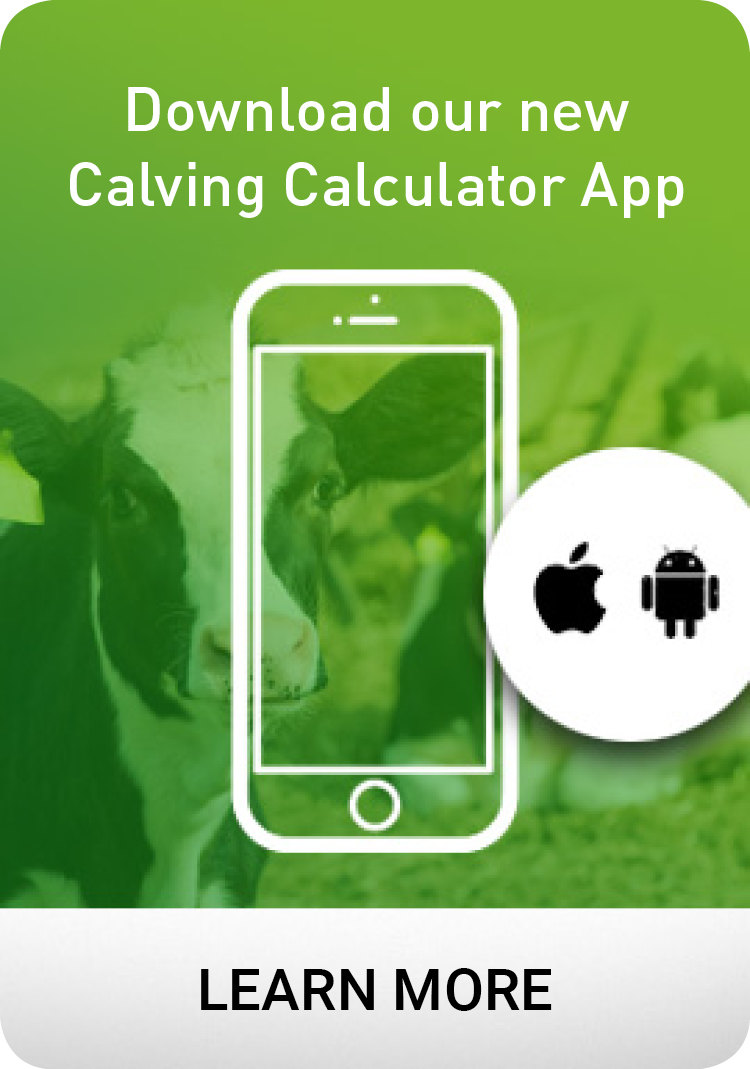Hormones of a Cow's Oestrous Cycle

Hormones of a Cow's Oestrous Cycle
Hormones produced by the ovary, uterus and glands within the brain control the oestrous cycle naturally in cattle. We can however manipulate the oestrous cycle with the use of pharmaceutical preparations of hormones. These are manufactured by companies such as Vetoquinol to enable convenient yet optimal management of assisted reproduction.
Benefits of Assisted Reproduciton
- Broader selection of sires and dams
- Shortening the natural cycle
- Shortening the calving to conception interval
- Improving the fertility rate
- Treating anestrous cows
- Treating cystic ovarian disease; and
- Salvaging genetic material from superior cows.
Assisted reproduction enables cattle producers to enhance a female’s reproductive capacity. A greater awareness of the role each hormone plays and how they can be manipulated, may help producers improve their herd’s productivity.
Hormones (with the exception of progesterone devices) are generally prescription-only products, therefore veterinary consultation on usage must be sought.
The oestrous cycle is defined by the normal activities related to oestrus (standing heat and subsequent ovulation) and the period of time from one heat to the next. Cattle cycle every 21 days (range 18-24 days).
The cycle is divided into two phases. The Follicular Phase is short (~3 days) and active, dominated by the maturation of an ovulatory follicle containing the oocyte (egg) for ovulation. The Luteal Phase is longer (~18 days) and is dominated by the Corpus Luteum (CL), a structure that grows from remnants of the ovulatory follicle, at the site of ovulation.

Hormones of the Oestrous Cycle
The two main hormones produced by the ovary are oestrogen and progesterone.
- Oestrogen (E2) is produced by the dominant follicles. As the final wave of follicles mature and a dominant follicle(s) emerges, concentrations of E2 in the blood increase, eventually combining to instigate ovulation. E2 promotes follicle maturation and causes external symptoms of heat such as a willingness to be mounted. Oestradiol benzoate (ODB) is the formulation prescribed by veterinarians as part of synchronisation protocols.
- Progesterone (P4) is essential for normal reproductive cycling. It is produced by the CL in order to suppress heat and block ovulation. With assisted reproduction, intravaginal progesterone devices, such as Cue-Mate®, allow P4 to be released into the membrane of the vagina and then circulated via the blood. Both P4 and E2 work synergistically to reset the follicular wave to prepare the female for a synchronised ovulation.
During the cycle, the ovaries are regulated and stimulated by other hormones released from the brain or the uterus that work together to allow the success of the cycle. These include prostaglandin F2α (PG), gonadatrophin-releasing hormone (GnRH), follicle stimulating hormone (FSH) and luteinising hormone (LH).
3. Prostaglandin F2α (PG) is released from the uterus in a natural cycle if there is no pregnancy, i.e. if the egg fails to fertilise or the embryo fails to progress. PG causes the CL to regress (luteolysis) and removes the suppression of the follicle allowing it to grow and produce E2 to initiate heat/ovulation. Injection of PG from 5 days post-ovulation can be used to induce heat/ovulation.
4. Gonadotrophin-releasing hormone (GnRH) is released from the brain after the removal of the blocking action of P4 (i.e. removal of the Cue-Mate® device). As progesterone concentrations decrease, GnRH levels increase which in turn act on the pituitary gland in the brain to trigger the release of follicle stimulating hormone (FSH) and luteinising hormone (LH). When E2 levels peak, a subsequent surge in LH occurs inducing ovulation (i.e. release of the egg). Synthetic preparations of GnRH have LH action, with the purpose to induce ovulation.
5. Follicle stimulating hormone (FSH) supports the growth and maturation of follicular waves. Preparations of FSH prescribed by a veterinarian are used to superovulate females. An oversupply of FSH circulating in the blood enables many follicles to grow, mature and ovulate, facilitating the production of multiple embryos after insemination.
6. Luteinizing hormone (LH) is also considered a gonadotrophic hormone because of its role in controlling the function of ovaries in females and testes in males i.e. the gonads. As mentioned above, the sudden rise of LH in females, triggers ovulation and development of the corpus luteum.
Protocols for the manipulation of the oestrous cycle and artificial reproduction have been developing over the past 50 years. The use of pharmaceutical formulations now allows the flexibility to synchronise large mobs of females for Fixed Time AI (FTAI) through to synchronising mobs of donor cows for Multiple Ovualation ET (MOET) or IVF.
For further information on the oestrous cycle or to discuss an assisted breeding program, give Vetoquinol’s friendly Repro360 team a call on 1800 032 355.

